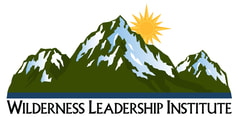Snowpack Summary January 13, 2022
Posted by Allen Giernet @ 5:50pm (this summary expires in 48 hours)
This summary applies to backcountry areas only.
The Bottom Line –
Tomorrow avalanche danger will be low in the morning with Fast Firm conditions possible at the higher elevations. A chance of Wet Snow Avalanches will increase into the afternoon and through the day as temperatures rise. Be aware of rapid warming and snow softening. As these changes occur avoid being on or under slopes steeper than 35°.
If you venture out please submit your observations to the avalanche center Submit Reports page.
Posted by Allen Giernet @ 5:50pm (this summary expires in 48 hours)
This summary applies to backcountry areas only.
The Bottom Line –
Tomorrow avalanche danger will be low in the morning with Fast Firm conditions possible at the higher elevations. A chance of Wet Snow Avalanches will increase into the afternoon and through the day as temperatures rise. Be aware of rapid warming and snow softening. As these changes occur avoid being on or under slopes steeper than 35°.
If you venture out please submit your observations to the avalanche center Submit Reports page.
Problems

Loose Wet avalanches are the release of wet unconsolidated snow or slush. These avalanches typically occur within layers of wet snow near the surface of the snowpack, but they may quickly gouge into lower snowpack layers. Like Loose Dry Avalanches, they start at a point and entrain snow as they move downhill, forming a fan-shaped avalanche. Other names for loose-wet avalanches include point-release avalanches or sluffs. Loose Wet avalanches can trigger slab avalanches that break into deeper snow layers.
General Summary
Overnight temperatures have remained above freezing for the past several days and our primary concern will be Loose Wet Avalanches. Possibility will be low in the morning and increase through the day as temperatures rise with the hazard moving from lower elevations into higher elevations and from East through the South to the West. Be aware of rapidly changing temperatures and the signs of wet snow instability i.e. roller balls and pinwheels especially near rock outcroppings and rock bands and boots sinking into boot top depth. These are the signs that you should reconsider your plans. Avoid being on or under slopes over 30° as these conditions present themself as it may be too late. North aspects will be less likely to have these conditions but they will still be possible especially at lower elevations and on NW and NE aspects. Start early and finish early to reduce chance of exposure to Wet snow instability. Freezing conditions are forecast to return Friday night so anticipate fast firm conditions for early Saturday morning with the potential for slide for life scenarios.
Exercise caution on slopes over 30°. Always exercise caution when entering into winter mountain areas. Bring a Beacon Shovel and Probe and know how to use them. Travel with a partner and make conservative decisions.
Overnight temperatures have remained above freezing for the past several days and our primary concern will be Loose Wet Avalanches. Possibility will be low in the morning and increase through the day as temperatures rise with the hazard moving from lower elevations into higher elevations and from East through the South to the West. Be aware of rapidly changing temperatures and the signs of wet snow instability i.e. roller balls and pinwheels especially near rock outcroppings and rock bands and boots sinking into boot top depth. These are the signs that you should reconsider your plans. Avoid being on or under slopes over 30° as these conditions present themself as it may be too late. North aspects will be less likely to have these conditions but they will still be possible especially at lower elevations and on NW and NE aspects. Start early and finish early to reduce chance of exposure to Wet snow instability. Freezing conditions are forecast to return Friday night so anticipate fast firm conditions for early Saturday morning with the potential for slide for life scenarios.
Exercise caution on slopes over 30°. Always exercise caution when entering into winter mountain areas. Bring a Beacon Shovel and Probe and know how to use them. Travel with a partner and make conservative decisions.
General Mountain Weather Forecast |
Hint: for historical weather forecast data use our facebook page as all posts are there on a running timeline.
For more details check each areas forecast and weather stations for most current information.
Click here for this Season's Snow Pack Summaries
To better understand the challenges and potential variability over the large area we are producing information for please read our Snowpack Summary - Format and Limitations
Disclaimer:
This Bulletin is designed to generally describe conditions where local variations always occur. Travelers are advised to exercise caution and make slope specific evaluations. As always, please treat this bulletin with appropriately guarded skepticism and make your own assessments. Help to provide more information to the community by reporting your observations
This Bulletin is designed to generally describe conditions where local variations always occur. Travelers are advised to exercise caution and make slope specific evaluations. As always, please treat this bulletin with appropriately guarded skepticism and make your own assessments. Help to provide more information to the community by reporting your observations
Click on the links below for the latest information
Latest Observtions
Click on the observation to go to the full report
|
Snowpack Obs 1-1-22 Baldy BowlObservation type
Snowpack Location - Mt Baldy Bowl Date (yyyymmdd) - 20220101 Comment - At around 9,200' at the top of the Baldy Bowl south of the Mount San Antonio summit I decided to do a quick slab check by isolating a 30x30cm square of ice and then giving it a tug to get a sense of the snowpack. Before I could finish isolating the square, the top portion (slab) slid off of the snow layer beneath it and slid about a meter down slope. I decided to do the same thing a little further climber's right incase the area I chose has been tread on and that was influencing my check. Moved about 3 meters east and did the same thing with the same result (separated and slid before being fully isolated; let alone even giving me a chance to stress test it). Inspected the snow in the small hole that now existed and it looked like faceted snow with a strong layer resting on top. Turned around from there and advised people as I went down when they asked why I was heading back / didn't summit. Other notes: On the way I up I observed large roller balls starting around 7,400', and when dawn broke on the bowl there were fresh crowns and avalanche debris all over the bowl (except the western facing aspect). |
Observation type
Snowpack Location - Baldy Manker Canyon Date (yyyymmdd) - 20211231 Comment - Crust on oatmeal… Rolling on all aspects. Rapid warming heightened by periodic sun. CT5: ~10-15cm - non planar fracture. 85cm depth overall. Fairly uniform (finger/fist) snowpack. Appears to be bonding adequately though pervious storms have only held >8,000ft |
Observation type - Snowpack
Location - Hwy 2 - 6,000' gate Date (yyyymmdd) - 20211231 Comment - Hi! I haven’t submitted a report before so will give the info that we collected, hope it can help! Intended to tour Kratka Ridge but the gate was closed before Waterman. We chose the peak to the south of the highway starting at 6k feet and climbed to around 6700ft. The coverage was good and no one in our group of 5 hit buried objects. The pole penetration was an approx 2 inch crust layer above a soft but consistent snowpack of approx 2.5 feet at base to 3.5 feet at top. Some visible surface hoar near the top. We dug a N/NE 100cm deep pit at the top on the leeward slope and did a visual, hardness and 30cm column test. There was a 1 inch crust layer, another visible layer at 10 inches (likely wind transport) then uniform from there to dirt. No evidence of previous base. Was consistent transition from fist to 4 finger top to bottom and last couple inches were 1 finger. Other than the crust and the wind deposit it looked like a solid gradient softer up top compacting as it went down. Snow quality looked good, no evidence of rotten or faceted crystals. The wind layer fractured at 4 but didn’t release, was able to move it at 7, nothing more from there. Overall we felt good about what we saw and felt. the crust layer was challenging and ultimately the primary concern for the day, made for tricky turning and freeze layers below trees from drips and globbing. Day started around freezing and there was some warming over the course of our 3 laps, the last lap was great as the upper crust softened a little. Imagine wet loose might become a concern with afternoon warming. We avoided steep terrain due to the crust layer and it made the skiing sub-par, but overall a great day! |
Observation type
Snowpack Location - Buckhorn Lodge Date (yyyymmdd) - 20211226 Comment Old report from Saturday/Sunday at Buckhorn. 6pm Saturday found 6-8" firm with 1-2" new dense snow on top, wind 10-30 from south, 27⁰, snowing hard. 130am heavy snow 29⁰ windy. 6am clear, light wind, 19⁰, 10-12" total new of dense snow on 6-8" maybe more. Rode creamy, no face shots. I did note the slight warm up mid storm left a layer that could be a problem. Wrong place, wrong time thing. Stayed cold all Sunday(mid 20s). Report from Monday's storm was "just a few inches". |
General Caution
You should always use safe terrain management and carry avalanche rescue equipment in the backcountry. Most avalanches are triggered by someone in the party or the victim. Practice with your rescue gear often and be prepared should the worst happen. Though we do not have an avalanche forecast center in this area as of yet, the information posted and shared here as well as the resources available on this site will help to make informed decisions for your backcountry travels. Use avalanche forecasts in your travels wherever available and be aware that avalanche ratings are general information. Elevation, location, geographic variability’s, slope aspect and angle all have effects on the particular area you travel in. This is only one piece of the information you should use in your decision making process. There is no substitute for avalanche education, for more resources and information as well as education please refer to our resources page.
You should always use safe terrain management and carry avalanche rescue equipment in the backcountry. Most avalanches are triggered by someone in the party or the victim. Practice with your rescue gear often and be prepared should the worst happen. Though we do not have an avalanche forecast center in this area as of yet, the information posted and shared here as well as the resources available on this site will help to make informed decisions for your backcountry travels. Use avalanche forecasts in your travels wherever available and be aware that avalanche ratings are general information. Elevation, location, geographic variability’s, slope aspect and angle all have effects on the particular area you travel in. This is only one piece of the information you should use in your decision making process. There is no substitute for avalanche education, for more resources and information as well as education please refer to our resources page.






















